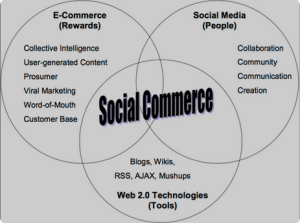Impulse buying is a consumer behavior where individuals make unplanned and spontaneous purchases, often influenced by various psychological and emotional factors. Effective advertising plays a significant role in triggering and capitalizing on impulse buying. This analysis demonstrates how effective advertising contributes to impulse buying:

Impulse Buying and Effective Advertising
-
Table of Contents
ToggleCreating Urgency:
- Advertisements often use language and visuals to create a sense of urgency, such as limited-time offers, flash sales, or exclusive deals. This urgency can prompt consumers to make quick decisions and purchases.
-
Emotional Appeal:
- Emotional appeal in advertising can evoke feelings such as excitement, happiness, or fear of missing out (FOMO). These emotions can drive impulsive reactions and spur consumers to make immediate purchases.
-
Promotions and Discounts:
- Highlighting promotions, discounts, or special offers in advertisements can attract consumers seeking a good deal. The perceived value of the offer may push individuals to act impulsively to take advantage of the savings.
-
Visual Impact:
- Eye-catching visuals, vibrant colors, and compelling imagery in advertisements can grab attention and stimulate impulsive reactions. Strong visual elements make products more memorable and desirable.
-
Celebrity Endorsements:
- Associating products with celebrities or influencers can enhance their appeal. Consumers may be more likely to make impulsive purchases based on the influence and perceived lifestyle of their favorite personalities.
-
Convenience and Accessibility:
- Advertisements that emphasize the ease of purchasing or highlight the accessibility of products can encourage impulsive buying. Messages that stress convenience can trigger spontaneous decisions.
-
Cross-Selling and Upselling:
- Cross-selling and upselling techniques in advertising, suggesting additional or upgraded products, can lead to impulse purchases. Consumers may decide to add complementary items to their cart based on persuasive advertising.
-
Interactive and Engaging Content:
- Interactive and engaging advertising content, such as quizzes, polls, or interactive videos, can create a sense of involvement. Consumers may be more likely to make impulsive decisions when actively engaging with the content.
-
In-Store Displays and Placement:
- For brick-and-mortar stores, effective in-store displays and strategic product placement can influence impulse buying. Advertisements that showcase products prominently can attract attention and spur immediate purchases.
-
Social Proof:
- Incorporating social proof, such as customer reviews, ratings, or testimonials, in advertisements can build trust and credibility. Positive social proof can contribute to impulsive buying by alleviating concerns and reinforcing the desirability of a product.
Advertisers leverage these psychological and marketing techniques to tap into consumers’ emotions and decision-making processes, ultimately driving impulse buying. Understanding consumer behavior and crafting compelling advertisements that resonate with target audiences are essential elements in capitalizing on impulsive purchasing tendencies.
